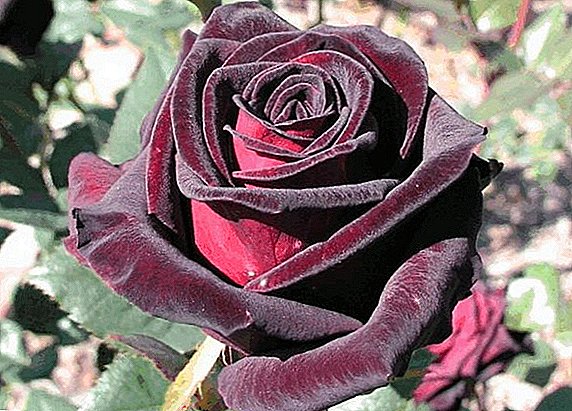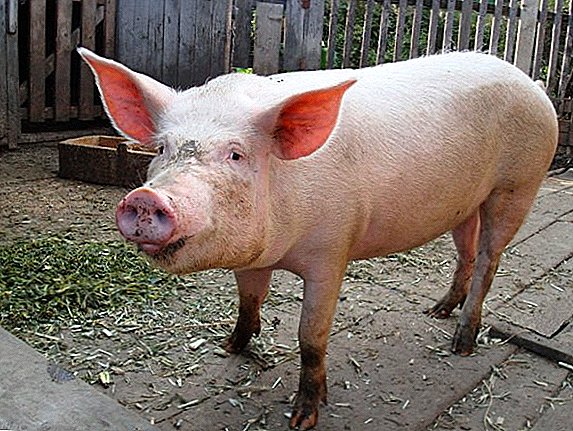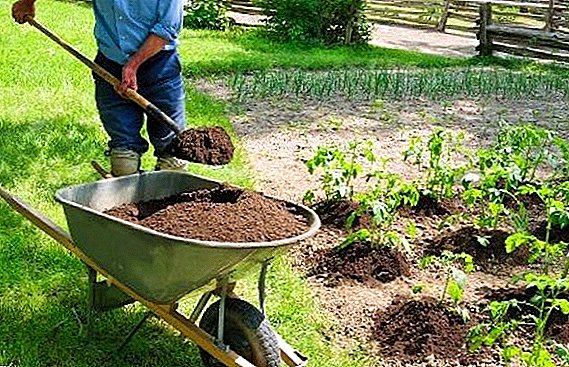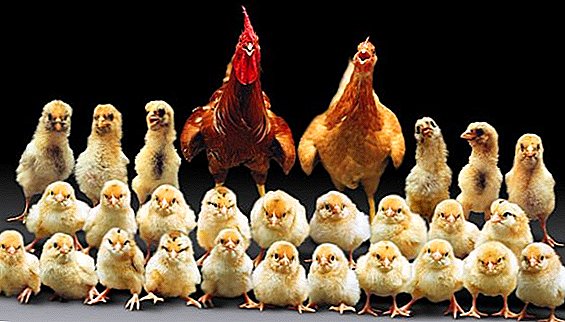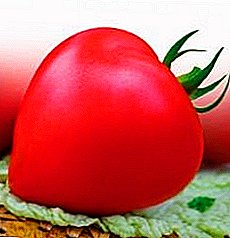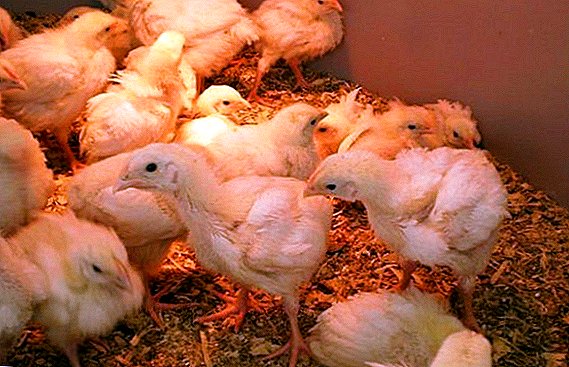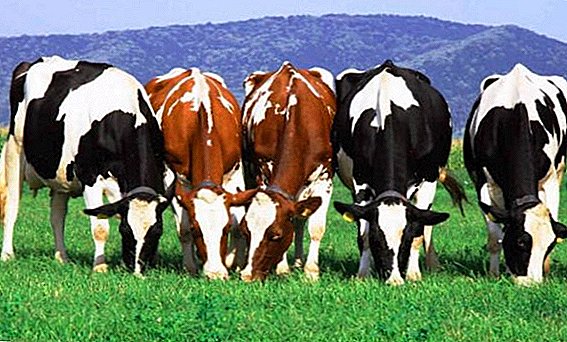 In the world there are about 1000 different breeds of cattle (cattle). In order for farmers to meet their expectations about animal productivity and adaptation to habitat conditions, they need to find out the characteristics of each species and its main qualities. In this regard, it is interesting to know which cattle breeds are most popular and in demand in such a large country as the USA.
In the world there are about 1000 different breeds of cattle (cattle). In order for farmers to meet their expectations about animal productivity and adaptation to habitat conditions, they need to find out the characteristics of each species and its main qualities. In this regard, it is interesting to know which cattle breeds are most popular and in demand in such a large country as the USA.
Consumption of beef and cow milk in the USA
One of the main consumers of beef and dairy products in the world is the United States. The largest milk producing companies are located in the western regions of the country. They annually produce over 6.9% of dairy products from the total world production, which is 750 million tons of milk.
In the past few years, the state has seen a decrease in milk consumption by almost 22% compared with 2014 figures. Demand for products is falling - in most cases due to consumer interest in other beverages.
Thus, according to experts, until 2020, the sales of dairy products may fall by 11%, which is 15.9 billion dollars. At the same time, there is a demand for so-called "vegetable milk" in the States. To date, the sales volume of such a drink is $ 2 billion.
As for beef, its consumption from 2005 to 2014 also decreased by 19%. According to CattleFax, an independent company, in 2015 there was about 25 kg of meat per consumer, while in 2005 this figure was 30 kg.  It is predicted that by the end of 2018, the consumption of beef meat will increase to 26 kg per person. The very production of beef for all years remains stable. The global demand for meat from the US is growing, and most of the production volumes are exported.
It is predicted that by the end of 2018, the consumption of beef meat will increase to 26 kg per person. The very production of beef for all years remains stable. The global demand for meat from the US is growing, and most of the production volumes are exported.
Check out the top 7 breeds of dairy cows.
What breeds of cows are popular in the States?
All varieties of cattle can be divided into three categories: dairy, meat and meat and dairy. Representatives of each breed differ in parameters, exterior, productivity indicators, etc. In the United States of America, several varieties of pedigreeds have become most popular.
Ayrshire
Ayrshire cow refers to dairy animals. This species was bred in XVIII, Scotland, Ayr County. As a genetic basis for the Ishir livestock, there were cows and bulls of local origin, in whose veins flowed the blood of the Dutch and Alderney relatives. The breed received its official status in 1862.  External description Ayrshire cows have:
External description Ayrshire cows have:
- proportional, compact constitution;
- wide back;
- strong short limbs;
- Medium sized head, on which are twisted horns.
Learn more about the Ayrshire breed of cows.
The short and fine hair of the female cow has a very attractive motley color, where red-brown spots stand out against a white background. With an average height of 125 cm, the weight of animals reaches: females - 480 kg, bulls - 700-800 kg.
Productive qualities Dairy products have not only a large number, but also very high quality due to the low number of udder cells, high protein content and good fat content. The amount of meat is satisfactory.
- Annual yield An Ayrshire cow is able to produce up to 5,000 kg of milk annually.
- Milk Fat varies from 4% to 4.3%, the protein content varies from 3.3% to 3.5%.
- Maturation of females pretty quick. After 1.5 years, they can be inseminated. Cow calves are born with a weight of about 25-30 kg, but they gain weight very quickly and can increase their weight indices by a factor of 10 over one year.
- Slaughter exit meat - approximately 50%.

Holstein (Holstein-Friesian)
The leader in popularity in the United States is the Holstein breed, which was bred in the north of the country. Her ancestors are black-and-white cows, which first appeared in European countries and were brought to America in the middle of the XIX century.
Read more about the Holstein breed of cows.
Thanks to the many years of work of the breeders on the improvement of the breed, in which they noticed excellent productive qualities, a new variety of cattle, called Holstein or Holstein Frisian, was developed.
External description It is quite easy to recognize a Holstein cow, since it is characterized by characteristic exterior features:
- the trunk has a wedge-shaped shape;
- black and motley color;
- shoulders wide and strong;
- the udder is large but not sagging, with well developed veins.
The weight of an adult female reaches 600-700 kg, male - 900-1000 kg. The height at the withers is: females 145-150 cm, bull - 160 cm.  Productive qualities
Productive qualities
Holstein cow indicators are highly dependent on care, maintenance, diet and climatic conditions:
- Annual yield On average, the female is able to annually produce from 6500 to 9000 kg of milk, however, by creating comfortable conditions for keeping, as well as ensuring a high-quality, balanced in vitamins and minerals diet, you can achieve milk yield of 10,000 kg
- Milk Fat Burenka is 3-3.6%, and the protein content is 3-3.2%.
- Slaughter meat. Holstein cows are the largest among representatives of dairy breeds. Male individuals can reach weights up to 1250 kg, and females, under good conditions, can reach up to 1000 kg. At the same time, the slaughter yield of beef is 52-56%. Meat quality is good.
Did you know? The world leader in milk production per year has become exactly the cow of a holstein breed. In 1983, for 305 days, we managed to feed 25,000 kg of milk. Given the volume of milk, its fat content was slightly lower than usual, and was 2.8%.
Dutch
These cows, despite their name, were bred by the USA from U. Cheney more than three hundred years ago. Their distinguishing characteristic is the black and motley color with white stripes located behind the shoulder blades and in front of the macklock. 
External description Dutch cow has:
- large dry head with long horns;
- massive body;
- well developed muscular system;
- physique correct proportions;
- broad shoulders and a large sacrum.
The average weight of a bull reaches 900 kg, cows - 550 kg. The calf is born with an average weight of 35-40 kg. The height at the withers is 132.5 cm, at the sacrum - 132.4 cm.
Important! Dutch cattle are very picky about the content and diet, so the lack of proper conditions can adversely affect the productivity of the animal.Productive qualities
Representatives of the Dutch breed can boast quite good annual milk yield and meat indicators:
- Annual yield On average - from 4,000 to 5,500 kg of milk.
- Milk Fat and protein capacity equal to 38-4.1% and 3.3-3.5% respectively.
- Precocity early The first time insemination of females occurs at the age of 14-18 months.
- Slaughter meat - within 52-60%.

Galloway
Gallowian cows are meat breeds. They have become particularly prevalent in the northern and southern regions of the United States. The birthplace of the Gallowayers is the Scottish county of Galloway, where in the 18th century work began on the breeding of a new breed of meat.
It will be interesting for you to read about how much an average cow weighs and what the weight depends on, and also how to find out the weight of an animal without weights.
Closer to the XIX century, animals were transported to Canada and the USA, where active work began to improve the breed and create a large population of Gallouvean cattle.
External description
Today, representatives of this species can be distinguished by:
- thick curly black color coat with a wide white "belt";
- strong bones;
- elongated torso;
- a short wide head on a dense small neck;
- the absence of horns.
 Productive qualities
Productive qualitiesThe meat of the Gallowian cow is soft, juicy, has a pleasant aroma and contains a large number of valuable nutrients.
- Annual yield Milk function in animals is poorly developed, for a year a cow gives not more than 1500 kg of milk.
- Milk Fat is high and equals 4%. The capacity of the protein is from 3.6% to 4%.
- Maturation females average and starts at 33 months.
- Slaughter meat. The increase in live weight, which depends on the feeding and conditions of detention, varies from 800 g to 1.1 kg. At the same time, already at 15 months, the mass of bulls equals 400-430 kg, the slaughter yield is rather high - 58-62%.
Jersey
Another classic breed of dairy cows is Jersey, the breeding of which mankind is obliged to English breeders. The name of the animals received from the name of the island of Jersey, located in the English Channel.
We advise you to learn more about the Jersey breed of cows.
In the first years of the existence of animals, local authorities prohibited them from exporting in order to avoid crossing with other animals and to preserve their pure breed. In agricultural societies, the breed was represented only in 1872.  External description
External description
Distinctive characteristics of the Jersey breed are:
- a long, rather proportional body with an arched back;
- light medium head;
- thin neck with multiple folds;
- large, cup-shaped udder;
- animal color is red or dark brown, often on the lower part of the body can be replaced by white spots.
Growth in the withers of an artiodactual is approximately 120 cm. The live weight of bulls varies from 600 to 750 kg, of females - 400-450 kg.
We recommend reading about whether milking machines are good for cows.
Productive qualities
With its productivity, the Jersey burenka is able to please even the most demanding farmers:
- Annual yield During the year it gives more than 4,000 kg of milk, but with good care you can get 11,000 kg.
- Milk Fat high and in rare cases it is below 5%, averages 5.5-6%, it can reach up to 7%. Also, products contain a large percentage of proteins.
- Precocity tall, already in the biennial age, the cow is able to produce offspring. At the same time, a calf weighing 22-25 kg is born during calving.
- Slaughter meat quite low, which is explained by strict milk orientation, and is 50-54%.

Shorthorn
The Shorthorn breed of cows got its name because of the small size of their horns - the words "short horn" in English sound like this. The birthplace of the breed is England, where it was bred in the XVIII century, as a result of the crossing of local short-legged cows and bulls of the Dutch breed. Later, the animals settled in the United States and Canada.
Read more about the Shorthorn breed of cows.
External description
Distinctive features of the exterior of the Shorthorn breeds are:
- barrel-shaped, rather strong, broad, with well-developed musculature;
- small dry head;
- short thick neck.
- strong and short limbs;
- udder of medium size;
- thick black wool, which often rolls into strands;
- most of the animals have a reddish, red-motley color; you can also find white and red individuals.

The height of the cows at the withers is 128-130 cm. The live weight of the bull varies between 700-950 kg, the females - 550-750 kg. With decent care, the weight of animals can reach 1300 kg and 800 kg, respectively.
Productive qualities Since the breed belongs to the category of meat, it cannot please with its high productive characteristics in terms of milk.
- Annual yield The average annual indicators are 2500-3000 kg.
- Milk Fat ranges from 3.8% to 3.9%.
- Slaughter meat among the shorthorn representatives it is much higher than that of other breeds, and is about 75-80%. In this case, the calf is born with a weight of 25-35 kg, but already at 18 months its weight becomes 600 kg. Gain per day is about 1-1,2 kg.
Important! The main disadvantage of this breed is its low fecundity, which has led to the fact that the number of livestock has declined sharply today.
Schwycka
The cows of the Swiss breed, meat and dairy, are distinguished by their special beauty and nobility. Their homeland is the Alps in Switzerland, and the progenitor is short-lived cattle that lived in the country for many years.  In order to improve the color and improve the productivity, the breeders selected the best representatives distinguished by high milk and meat indices. Animals came to America at the end of the last century.
In order to improve the color and improve the productivity, the breeders selected the best representatives distinguished by high milk and meat indices. Animals came to America at the end of the last century.
Did you know? Schwyzkie cows have a very wayward character. In most cases they do not allow use for milking milk milking machine, but prefer human hands. They also love affection and a small massage of the udder before milking.External description
Shvitskie cows differs quite modest, neat size. They are well and proportioned. They have:
- long elongated body;
- well developed musculature;
- strong shoulders;
- powerful neck;
- medium dry head;
- a large udder with four well developed sections.
Animals have the right limbs and stand firmly on their feet. The adult female weighs about 500-800 kg, the bull - 1100 kg. 
Productive qualities
Indicators of both meat and milk are at a high level:
- Annual yield For the year from the female can be achieved from 4,500 to 10,000 kg of milk.
- Milk Fat on average, it reaches 4%, and the protein content is 3.2–3.6%.
- The precocity of females quite tall.
- Slaughter meat - approximately 50-60% and depends on the individuality, weight and age. As a rule, the calf weighs 35-40 kg after birth. After a year of intensive nutrition, its weight is about 250 kg. At 18 months, the weight of the animal reaches a rate of 350-370 kg. When fattening daily increase is equal to 800-1000 g.
Breeding cows is a profitable business, both at home and on an industrial scale, so domestic farmers should pay attention to the breeds that are popular with their overseas counterparts.
This is due to the fact that these animals adapt well to various conditions, multiply well and grow quickly. And you can get from them not only healthy milk, but also tasty, nutritious, dietary meat.


